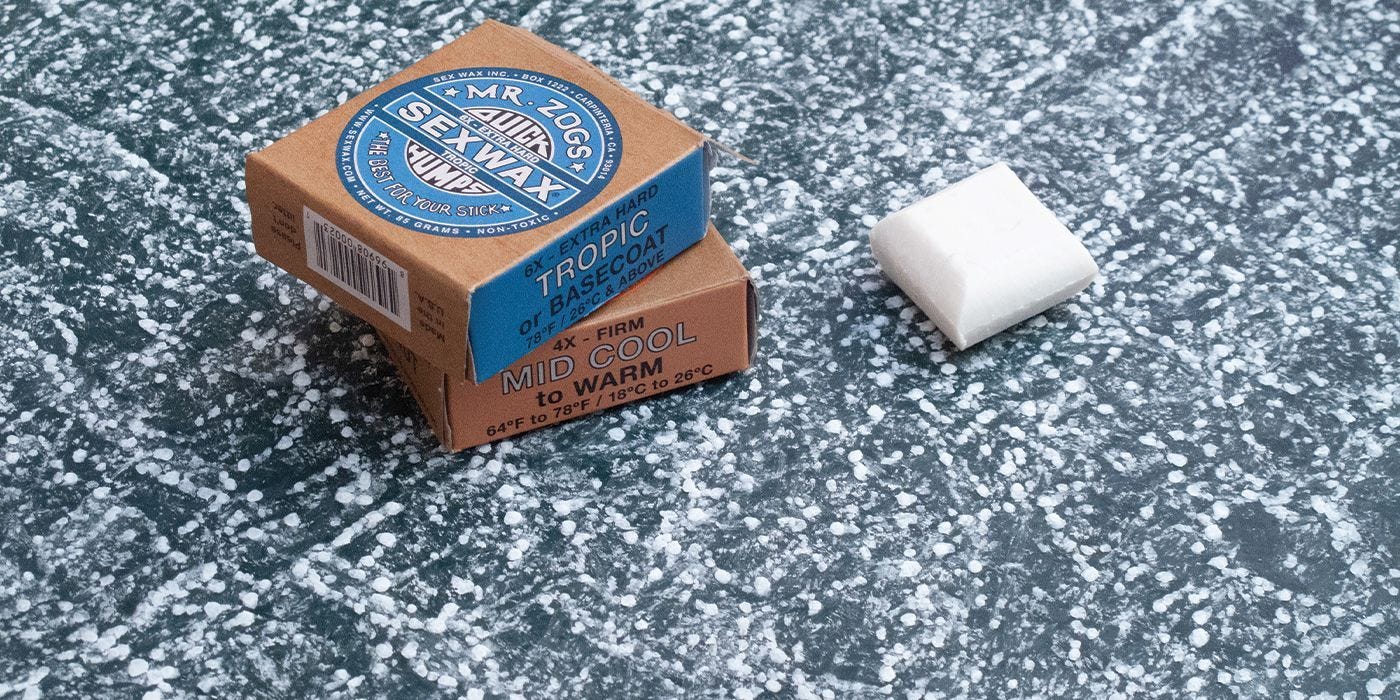How to Wax Your Surfboard.
Few things disappoint more in surfing than slipping while a perfect section passes you by because of a shoddy wax job. Let me talk you through waxing up your stick so you can avoid that level of disappointment.
First thing first
Start with a clean board. If it's new, just wipe it free of any dust. If you've just removed old wax from it, make sure you get that thin layer of wax residue removed too—if not your basecoat has a tendency to smear. A liquid wax remover is pretty good at this task.
What wax should I use?
The brand of wax you use is a personal preference. Some people will claim that there is a "best" wax: I don't really believe that to be true. However, some brand are more tried and true—like Zog's Sex Wax or Sticky Bumps—and that is something worth considering. The important factor is that you get the appropriate wax: that is, wax suited for the water temperature you'll be surfing in.
Surfboard wax comes in a range of hardnesses. You'll use a harder wax in warmer waters and softer wax the cooler the water temp gets. The packaging will usually be labeled as warm or cool or cold along with a corresponding temperature range.
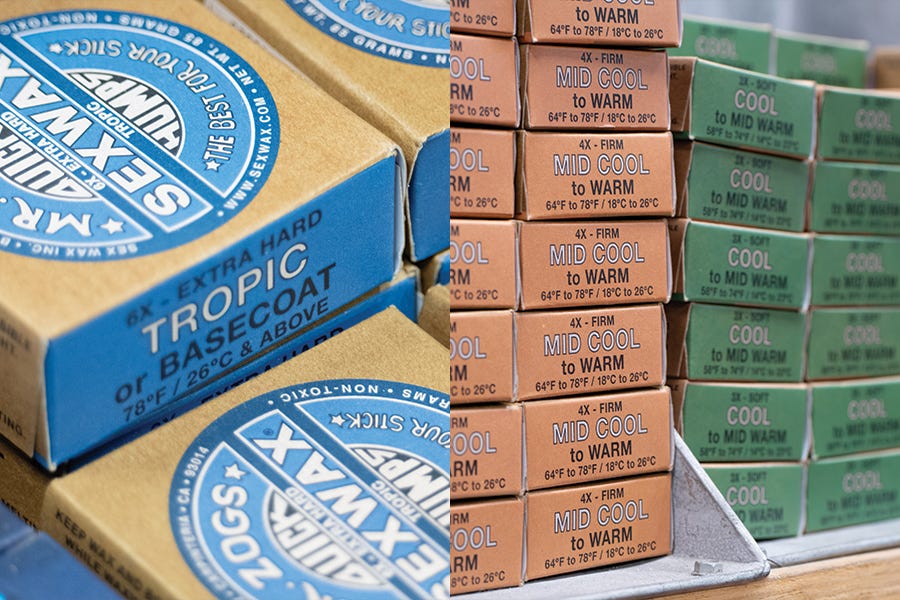
How do I wax my board?
You can definitely wax your board with just one bar. There are no rules against it. In fact if you were surfing somewhere in the tropics, all you'd need is just one bar—the one rated for the tropics. All the other bars would be rated for colder temps and unsuitable. But if you're like me and mostly surfing in cooler waters, I think you should go with the two bar method—a basecoat under a topcoat.
Most companies will market one of their bars as a basecoat. This is a harder wax, usually the hardest, making it less prone to moving about on your board. The pressure from your body has a tendency to push the wax from the areas you need it most. Using basecoat will greatly delay this inevitability.
The grip we get from wax is two fold. Some grippage comes from the tackiness of the wax itself. Also we get a fair amount of traction from the bumps that are created when applying the wax. This effectively works like those yellow tactile-paving surfaces you see on curb cuts and on the edges of steps. The goal is to get some nice bumps from this process. Before you start on the basecoat, make sure you're in a shaded area and your board is cool to the touch. If your board or wax is warm it will just smear into a mess across your board.
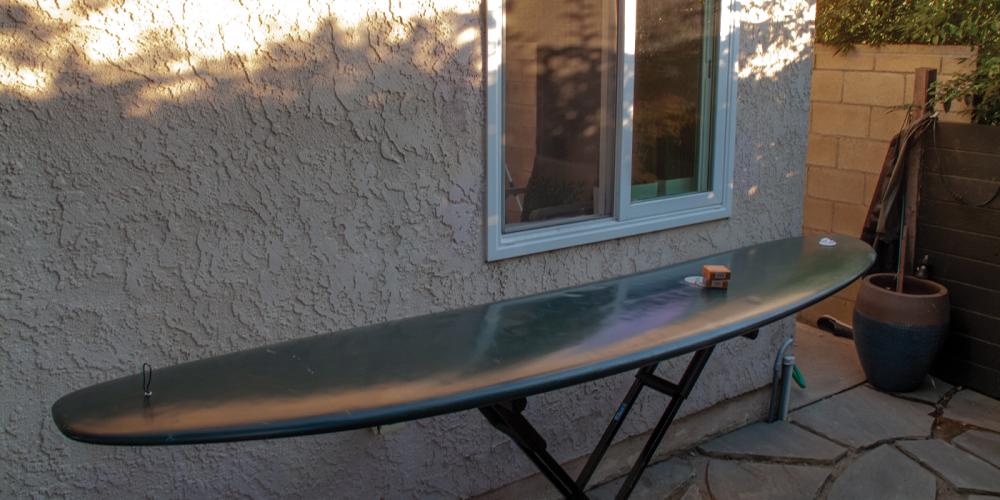
I start by working rail to rail. I hold the basecoat in such a way that it skips as I drag it across the board. I only apply enough pressure to get the bar to skip. Every few passes I rotate the bar ninety degrees. This way I'm always working on a cool edge of the bar of wax. I do this till the whole board is covered.
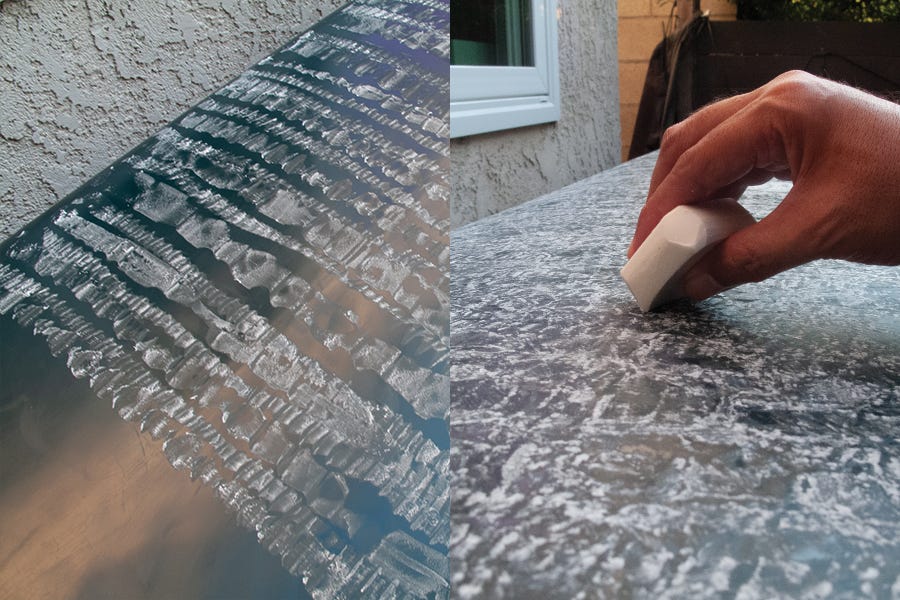
After that initial pass I transition to using small circles—like if I was wiping down a countertop. As the wax builds up, I use less and less pressure. It's important that you don't use to much force as you'll knock down the tops of the beads that starting to form.
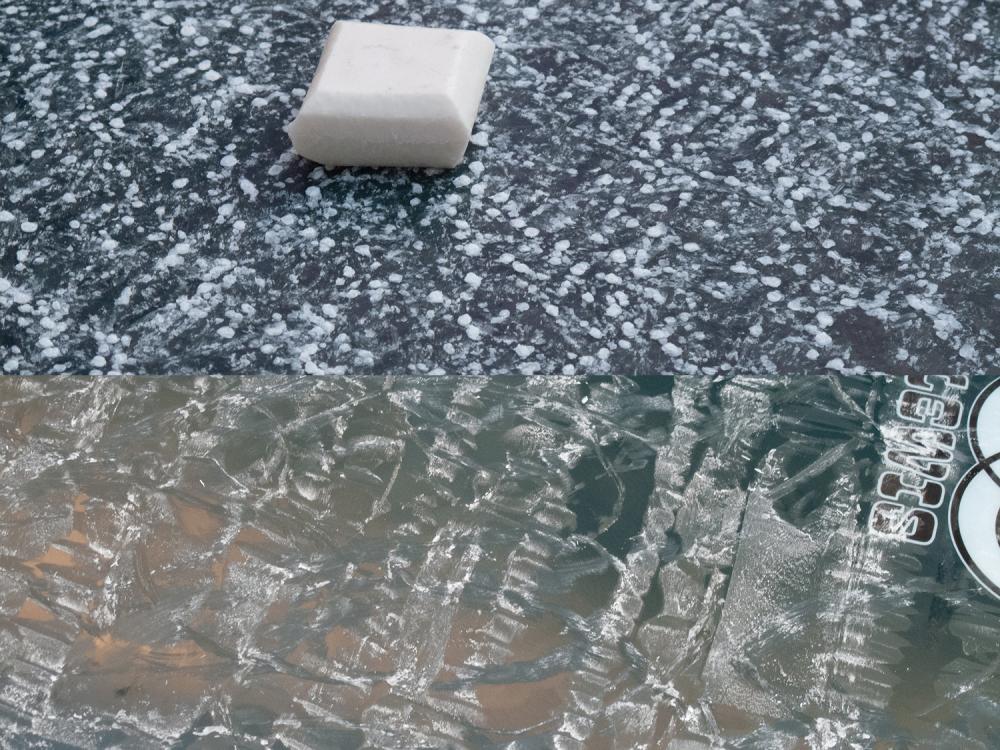
Keep it up until you have the desired size bumps. I always do a few extra passes down the middle of the board where my chest is and where I place my hands to pop-up. You are now done with the basecoat. You won't need it again until you decide to re-wax your board.
For the top layer of wax or "topcoat", just grab a softer wax appropriate for the water temps you'll be surfing in. Use very light pressure to apply a thin coat of wax—just enough to make it tacky. If you go too hard you'll just destroy the little mounds you spent an afternoon creating.
What else do I need to know?
Whatever you do, don't wax the bottom of your board. Someone will see it and they make fun of you amongst their friends. Even worse, you could end up on Kookoftheday. You don't need to wax around the rails. If you're surfing a a longboard, wax the whole deck; a mid-length, wax the whole deck; a shortboard, wax the whole deck—you'll need it for the airs.
Admittedly I'm a bit extra and very particular about my wax jobs. Dassa takes a different approach and you can check out what he has to say in the video below. That's it. Go surf!
